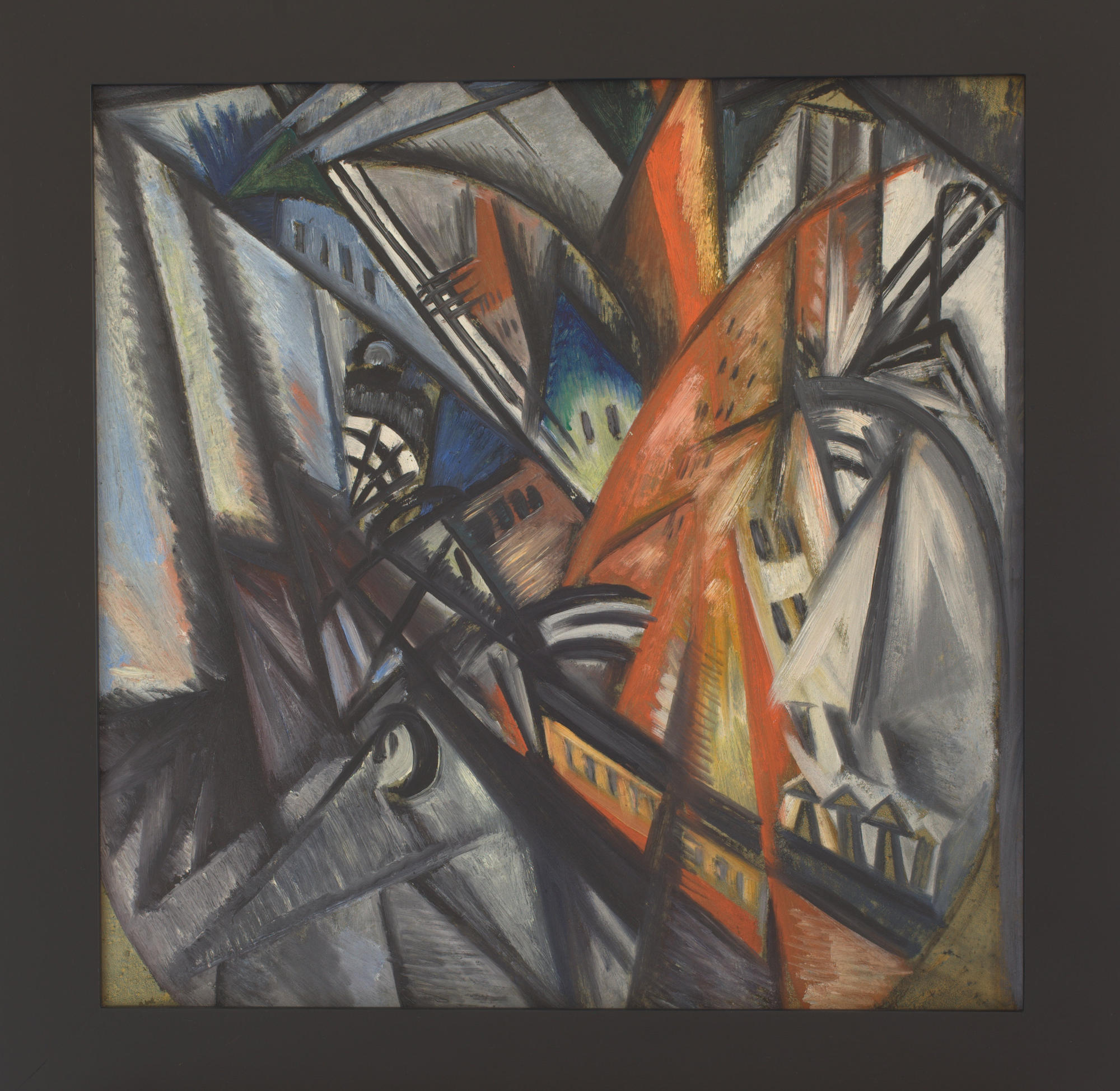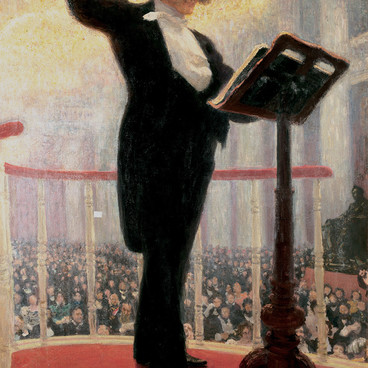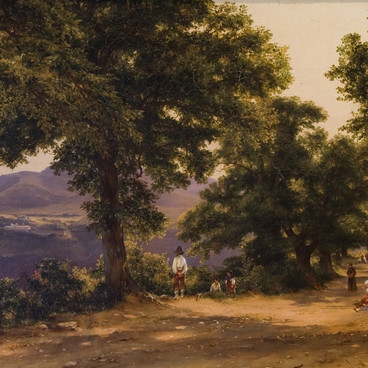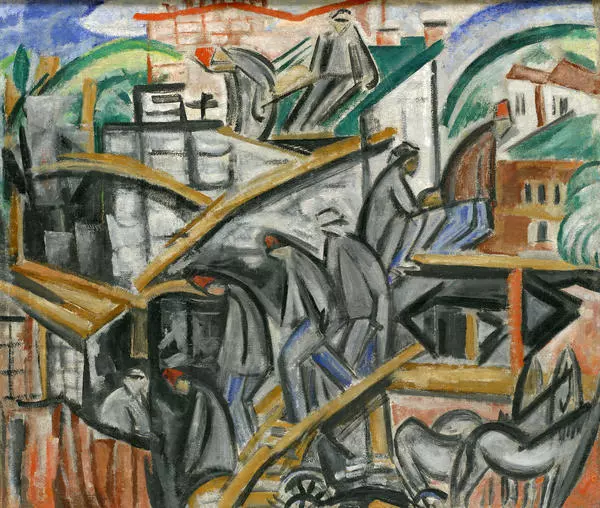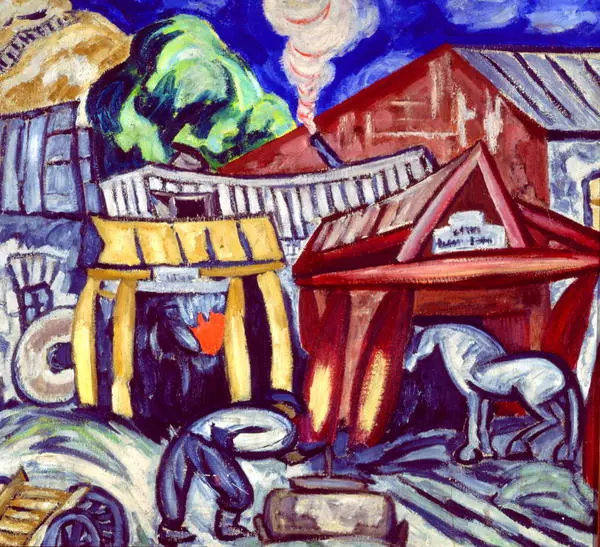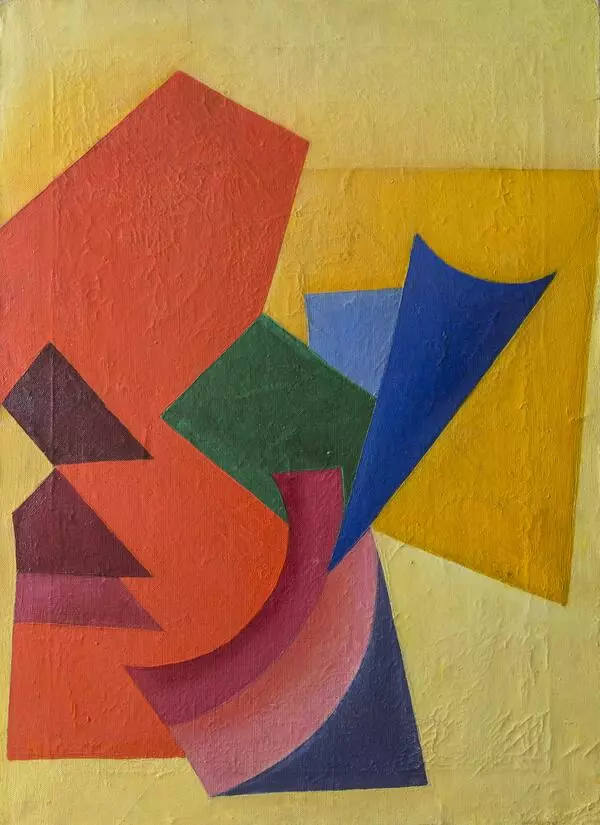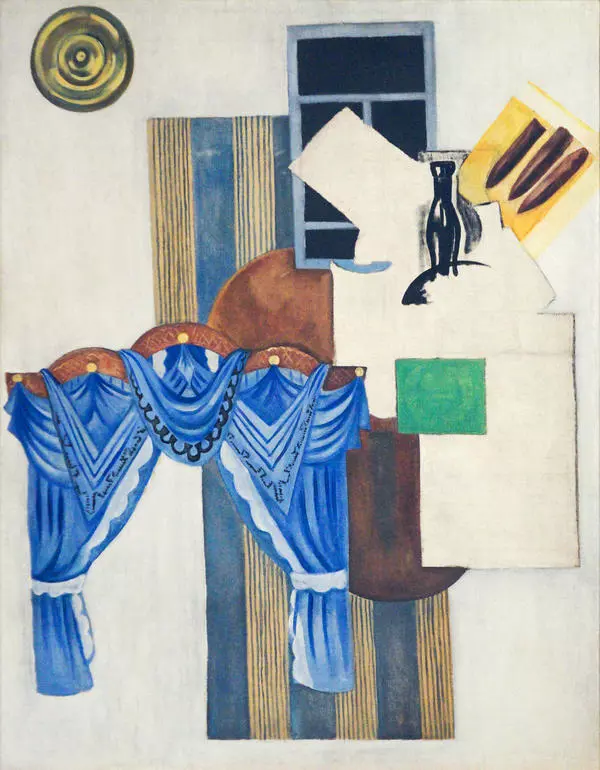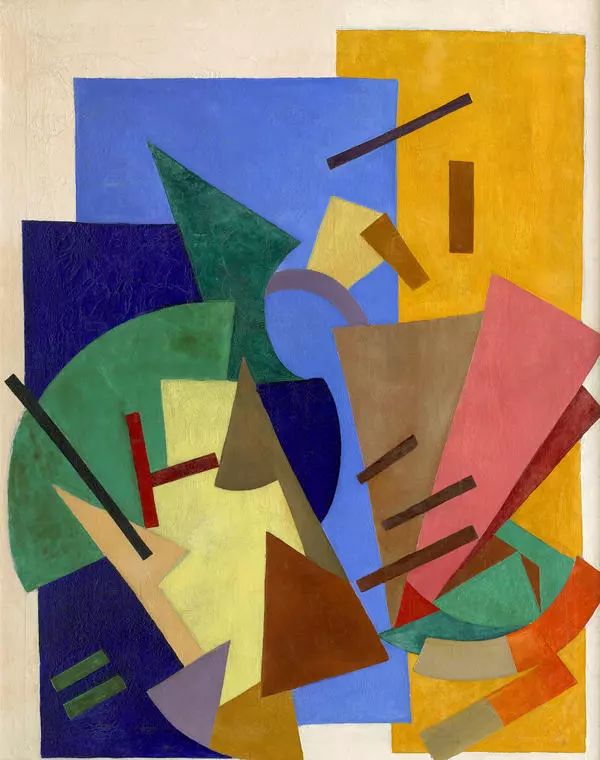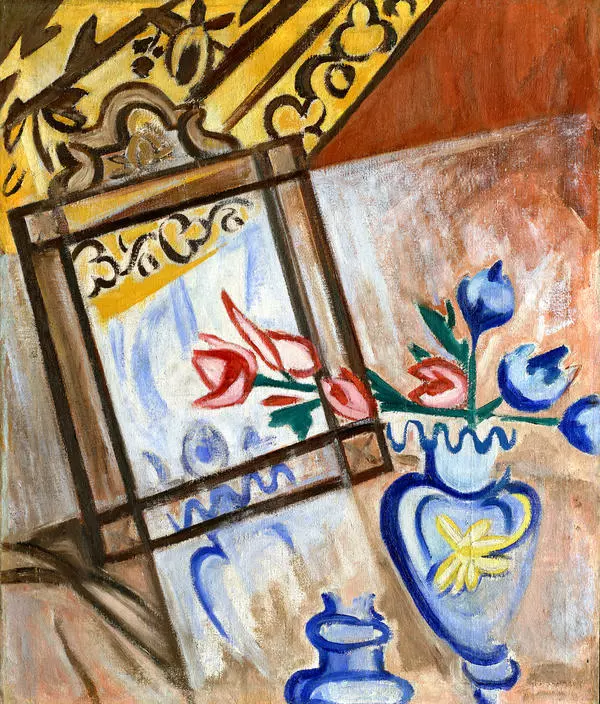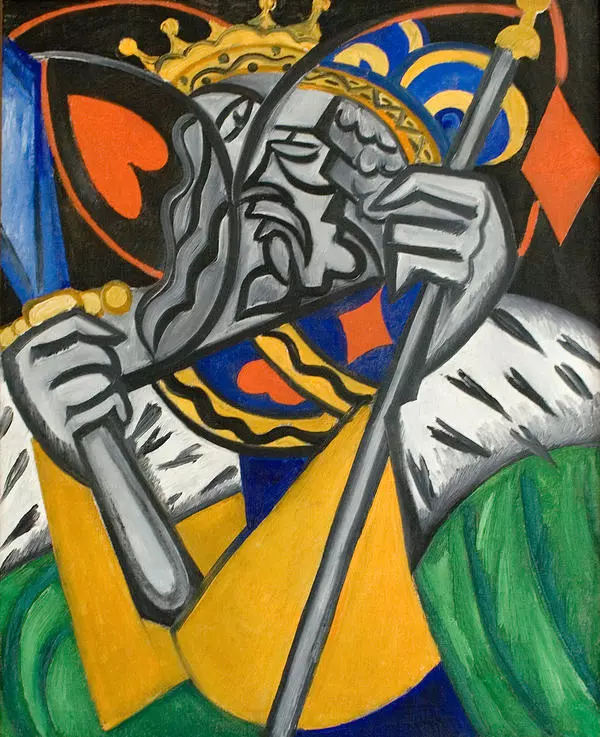Olga Rozanova created Urban Landscape in 1913 in Saint Petersburg. The piece is performed with oil paint on a tin plate (thin iron sheet). Nizhny Novgorod Museum of Fine Arts holds the sketch to this painting.
1 / 2
Urban Landscape
Время создания
1913
Размер
71x71 cm
Техника
Тin-plate, oil painting
Выставка
3
Открыть в приложении#1
Olga Rozanova
Urban Landscape
#2
#3
O.V. Rozanova. City. 1913. Nizhny Novgorod Museum of Fine Arts. Sketch to Urban Landscape (Samara Museum of Fine Arts)
The Urban Landscape depicts the panorama of a city with a busy street. The principle of kaleidoscope rotating clockwise underpins the painting. It creates a feeling of all things in the street spinning in one swirl. Windows, houses, iron grids, lookout tower are flashing before the viewers’ eyes. Buildings, bridges and fences are gradually turning around one center, as if they are interlinked into one mechanism.
#4
All the elements in the painting have the shape of geometric figures: rectangles, triangles, segments and lines.
#6
In the right lower corner, the artist depicted provisional human figures in hats (in the form of arrows).
#7
In the painting, Rozanova used mainly black and various shades of grey, but a bright spot is right in the center of the composition – an orange-red tram. Its contours are vague. A fire is breaking out in the background lighting the silhouettes of the buildings and the quickly moving vehicles. The second option of the painting’s title is Fire in the City.
#8
The artist used the styles of Suprematism and Cubo-Futurism very popular in the first three decades of the 20th century. Casimir Malevich, the founder of Suprematism, was the first to use the word Cubo-Futurism. He used this term to characterize his pieces presented at the exhibition of the Youth Association in 1913. The Youth Association was the first association of experimenting artists in Russia, and stood at the origins of Russian Avant-Guarde. On March 23, 1913, during the dispute about contemporary art, the artists announced the manifest of the Youth Association. Olga Rozanova wrote its motto: The future of art is in continuous renewal!
#9
The features of Cubo-Futurism style are not very clearly defined, and many various artists attributed their pieces to it. The world in their paintings looks atomized. The artists often placed unrecognizable items or their fragments on the background of geometric planes. They purposefully violated the established principles of art and physics. Their paintings resembled pictorial puzzles; Cubo-Futurists were building a new reality and fantasizing the future (the Latin futurum stands for ‘future’).
читать дальшескрыть
00:00
00:00
1x
Urban Landscape
Время создания
1913
Размер
71x71 cm
Техника
Тin-plate, oil painting
Выставка
3
Открыть в приложении
Поделиться
